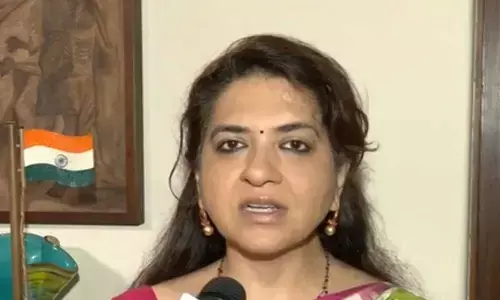Adopt active& passive investing strategies for a healthy portfolio

Adopt active& passive investing strategies for a healthy portfolio
An Active fund management involves in picking the right stocks at prices (ideally at cheaper valuations) and holding on to them through their growth in valuations
An Active fund management involves in picking the right stocks at prices (ideally at cheaper valuations) and holding on to them through their growth in valuations. This involves a greater deal of identifying the right stock at the right time and holding on to a right period. This is not an easy task and many would fail at consistently doing it. The risk is mitigated by right diversification (even within the same asset) and involve assigning right allocations among the stocks to achieve returns. Passive investing is about investing in an index directly irrespective of the components and their weightage. It doesn't involve in knit-picking of the stocks within the index where there could be a few outperformers, some at the average and the remaining exhibiting underperformance.
For instance, if one were to invest in large-cap stocks in the market, they could either directly invest in ETF (Exchange Traded Fund) or Index fund (Mutual Fund) of BSE Sensex or Nifty-50. One needn't worry about which stocks within the index needs to be picked and/or at what allocation in each of these stocks. An active fund would most likely take this index as the benchmark and tries to outperform by picking appropriate stocks at a suitable weightage. Passive investing has taken over the world by storm, this is particularly true in the developed world, especially post-Global Financial Crisis. This is partly due to the composition of the markets that became part of the movers and the skewed recovery in the way the economies recovered. Each phase of the equity market favoured only some sectors and the lack of secular growth has enhanced the chances of passive strategies.
Coming to India, we've not remained agnostic, but the outperformance in this strategy has been largely restricted to the large-cap space. This was due to the last few years of distorted weightage of certain stocks and their performance. For about a couple of years in the pre-pandemic period, the top-5 stocks in the index held over 70 per cent of Nify-50 and it became difficult for any active managed fund to beat the index during this period. With the regulation not allowing a fund to have exposure beyond 10 per cent of their portfolio in a particular single stock has also added woes to their performance.
Trends across the world were similar with a few sectorial or growth stocks performing way ahead of the rest creating a huge gap in the index performance with the rest of the active funds. The very concept of passive nature allows the elimination of expenses for research and other operational costs bringing the cost of investing to way lower than that of the active funds. This turned out to be double whammy for active fund performances and has further widened the performance gap. But should we go all-in to passive investing is still a moot point. One must evaluate these factors before doing that. Liquidity is one key factor to be considered, the ease of transaction depends purely on this. If one were to buy or sell units of a passive fund/ETF, the lack of liquidity could hamper the entire process and hence stick to the higher liquid funds in these categories.
Tracking error is the deviation or the margin of error of the fund with respect to the index. The closer the fund reflects the index, the better the fund objective is achieved. One need to keep in mind along with the cost of fund management i.e., the fee/charges. Generally, these funds have lesser charges relative to active management, but one could still surf across the funds to check for lower costs.
We sometimes get blinded by our search for outperformance and may ignore hidden jewels. For instance, India doesn't yet have an evolved passive market i.e., indices reflecting various sectors or segments of the stocks. Thus, we can't ignore a small cap or a mid-cap fund where the active management is still throwing challenge to the benchmark. Partly due to the lack of depth in these segments where quality management, mature businesses and free-float are sparse. So, identifying the right stock(s) plays a critical role in fund performance and the fact that there're only few stocks that live up to this pulls the index down.
While passive investing is still in nascent stages in India, it has become dominant in some of these countries, where at the macro level concerns are being raised on this strategy. So, as always, in investing being open is essential and so one could do well with a mix of both passive and active than dogmatic about to implement one strategy. The choice should be with an eye on the factors mentioned while aligning to the goals.
(The author is a co-founder of "Wealocity", a wealth management firm and could be reached at [email protected])









